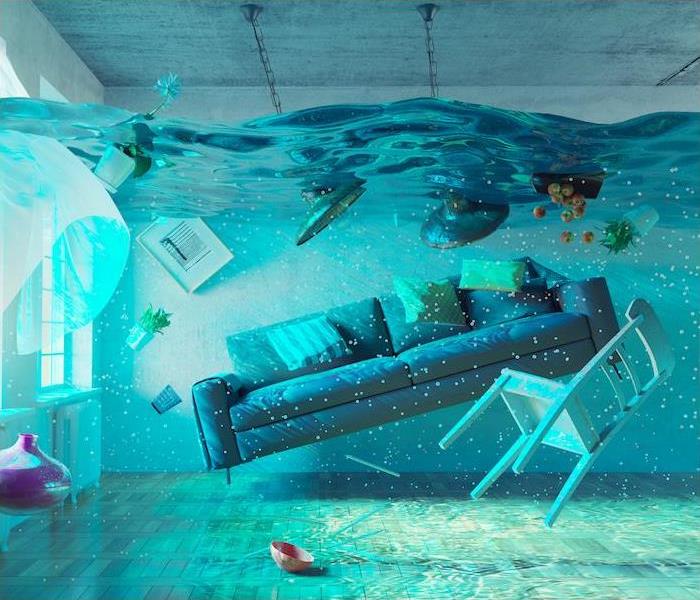What to Avoid When Remediating Flood Damage in Wilmington
12/18/2019 (Permalink)
 Flooding can seem overwhelming when it affects your home. Pick up the phone and call our experienced flood damage remediation technicians.
Flooding can seem overwhelming when it affects your home. Pick up the phone and call our experienced flood damage remediation technicians.
Open or Closed Dry Systems: What to Expect After Flood Damage in Wilmington
When extreme weather causes overland flooding in Wilmington, you are probably ready for our team to use pumps and commercial class extractors to remove the water. Although standing water removal is essential as one of the first phases of a flooding project, we transition to structural drying to complete the job. A homeowner’s instinct about what drying looks like can vary from what research teaches us to do.
Drying Is a Science Not an Instinct
When your Wilmington home experiences flood damage, you may want to throw all windows and doors open to encourage dampness to leave the space. Although there might be circumstances where this action can help, our customers are often surprised when we choose a closed drying system instead. Understanding the science behind structural drying clarifies our approach.
Balancing the Drying System
Moisture must move from structural components into the air during effective drying. SERVPRO facilitates this by directing a warmed air flow over wet surfaces. As the moisture load in the air increases, even the layperson feels the humidity rise. For continual moisture removal from structures, the water vapor must leave the air, decreasing the humidity. This decrease is effectuated by dehumidifiers. Closing the system to outdoor conditions allows our crews to control and manipulate the conditions, increasing the drying effect.
Disadvantages of an Open System
Post-storm, the outdoor air is frequently extremely humid, adding moisture load for dehumidifiers to handle. As the seasons change, the outdoor temperatures plummet, and colder air holds far less water vapor. If SERVPRO keeps your windows open during structural drying, your heating or cooling systems also work overtime, costing you money at the same time as the balance needed for most efficient drying is lost. Open windows and doors also create a security risk, exacerbated by any structural damage your home experienced during stormy weather.
Benefits of Smaller Drying Chambers
Even when SERVPRO uses a closed drying system, we often further intensify the drying power of air movement, heat, and dehumidification by partitioning your home into smaller drying chambers. In spaces where porous materials absorbed high levels of water, concentrating the drying effort delivers faster, more thorough results.
At SERVPRO of New Hanover, we emphasize transparent communication with our customers and happily explain why we choose the drying approach we believe is best for your situation. Call us at (910) 762-8180 to open the flood damage recovery conversation.
Click here for more information about Wilmington.






 24/7 Emergency Service
24/7 Emergency Service